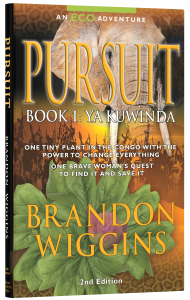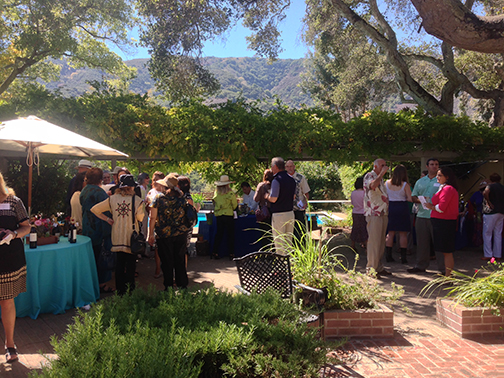
Monterey Bay Aquarium
I met Steve Vogel after a Rotary International meeting in Carmel, California. Steve is the head of animal husbandry at the world-renowned Monterey Bay Aquarium. He had come to our club to make a presentation on how the Aquarium tags sharks.
I have had up close one-on-ones several times with sharks so there was no news to me there. I was interested in the octopus.
As I explained to Steve, I was at the Monterey Bay Aquarium several years ago during the “member sleep-over.” Yes, as an Aquarium member, you may spend the night inside several nights each year. Now the term “sleep-over” is a misnomer since there is no actual sleep involved due to restless kids and snoring grandpas, but you get to snuggle up with the kelp forest tank none-the -ess.
I should mention that from age six to college, I aspired to be a marine biologist. My first open water expedition revealed that I get invariably seasick. I am now a botanist—a much more terrestrial endeavor—but I still yearn for the sea.
One Aquarium sleep over night, I was wandering around in places uninhabited by the other guests. Of course, they show the movie Jaws at midnight, thus removing all the children from the rest of the venue. I came upon a large enteroctupus dolfleinii, also known as the Giant Pacific Octopus. She or he (Steve made it known that they are not sure of octopus sexes) was attached to the thick Plexiglas side of her tank. I stood there marveling at her anatomy (I will use the term ‘she’ just for reference). She opened her eyes seemingly from a little nap and spotted me. Her eyes locked on to mine and she began to move. In an undulating fashion, she placed her magnificent body right in front of me while I was standing at her tank. She spread her eight tentacles in calculated moves as if she wanted to wrap her arms around me. But that is not what astounded me.
She looked deeply into my eyes, first with one eye, and then the other. The only way I can describe the experience is that we had a “moment.” We related somehow. I am not sure how cephalopods relate to each other, much less a human, but this was really something. I will never forget how that felt.
I described this event to Steve Vogel. I told him that since that encounter I refuse to eat Nama-tako (octopus in Japanese) at the sushi bar. I told him how mortified I was during Red Wing hockey games, without knowing why, when deranged fans threw dead octopi on the ice (this has since been outlawed, thank goodness).
He tilted his head. “Would you like to meet one?” Would I!!!!! As a science and environmental writer, I do get to do some pretty cool stuff. But this was special. It took several emails to make the arrangements, but yes, I did get to be with one.
My Magic Moment
I arrived with my old friend Danny McCarty, a professional photographer, and his 14-year-old daughter Alea. We were greeted by Cynthia Nolan, the new COO of the Monterey Bay Aquarium, who had been apprised of the encounter. I actually had not slept the night before as I was so excited. After all, how many people in the world get to do something like this? Steve arrived and took the three of us deep into the bowels of the Monterey Bay Aquarium.
Steve was very clear. “The octopus is a wild animal. It may or may not like you. If it doesn’t, it will go to the bottom of the tank and ignore you completely.” I knew this but was secretly hoping that we would have the “moment” that I had with the other octopus a few years before. That being said, I would be heartbroken if she rebuked me.
So we entered into the dark underbelly labyrinth behind the scenes at the world-acclaimed location. Steve led us up the stairs and opened the enclosure to the octopus’ garden.
“Now, it may not come. It has been fed already and it won’t be interested in eating.” Steve then started splashing water gently towards the creature. She was not far from us and reached out a tentacle. He splashed her a little more. She came right to me.
Octopi have taste receptors in each and every sucker. They have an incredible sensory and nervous system that can maneuver, extrapolate, decipher, and analyze information. She reached up to me and touched my arm. Then, the realization of my wildest cephalopod dreams, we fell in love.
She engulfed my upper torso. She stroked my face, my arms, my waist, and my shoulders. She looked at me as she caressed my body. She gently tried to assuage me to join her in the tank and I wanted to acquiesce. She was very strong. Steve mentioned that she was only twenty pounds. They had a seventy pound octopus before aptly named Octzilla. I was glad I was not so enamored with that big boy, because that could be dangerous.
My friend Danny reached his hand out to one of her larger suckers. She spit him out. She had no interest. She somewhat liked Alea, but not so much.
Now keep in mind, I was careful not to apply any lotion, oil, make up, or anything that would taint our tete a tete. I wanted an authentic experience, not to mention not wanting to spoil her garden.
Truth be told, things got a little heated. She had me engulfed, tugging hard to get me to dive in and play with her. Steve had to peel her off me to slow things down a little. She was excited. I felt her pull me into the center of her body. When I could feel her beak in the innermost folds of her skin, I asked Steve if she would bite. He said that she absolutely would not bite me, she never had. About three minutes later, she gave me a little love nibble. I will proudly wear that scar for the rest of my life.
After Steve pulled her away, sucker by sucker, tentacle by tentacle, we sadly said goodbye. I was so exhilarated by the experience, I practically skipped down the stairs. Steve led us through another labyrinth and out into the Aquarium itself. We looked at her through the Plexiglas in her own little garden where we had just been entwined. She was still lingering by the enclosure entry where we had been. She already missed me.
So I am now an advocate for the appreciation and conservation of the octopi. They are sentient beings living their lives the best they can—just as we are. How would you feel if someone came and yanked you from your home to be the nightly special at the sushi bar?
As stewards of this planet and all of its inhabitants, it is important to keep ourselves open to those “moments” with creatures with which we co-exist. It is imperative to protect their habitats and their lineages. There is something special between us Hominidaes and the other Kingdoms, Phylums, Classes, et cetera.
Something very special.
 She was walking through the Monterey pine and cypress forest, head bent, stooping deeply while inspecting the soil. She remembered what her father had told her, “Always remember to look up.” She hadn’t fully comprehended what he had meant; her nose was always to the grindstone. Always remember to look up? What kind of advice is that?
She was walking through the Monterey pine and cypress forest, head bent, stooping deeply while inspecting the soil. She remembered what her father had told her, “Always remember to look up.” She hadn’t fully comprehended what he had meant; her nose was always to the grindstone. Always remember to look up? What kind of advice is that?
